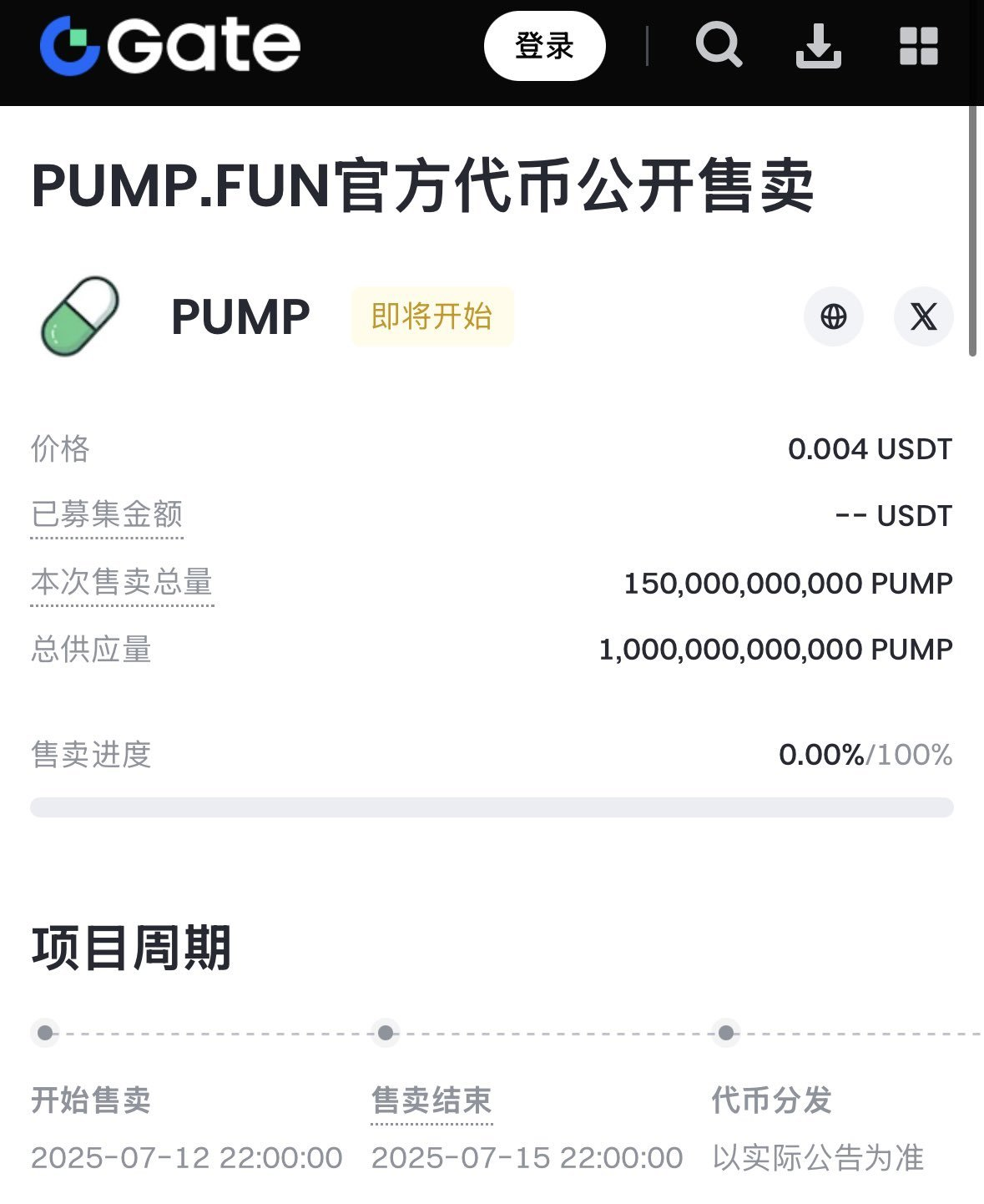A "meme casino" with income fluctuating a hundredfold, raising $600 million with a $4 billion valuation, with VCs and retail investors buying at the same price - is this financial innovation or the most glamorous harvesting script in crypto history?
In the early hours of today, the crypto exchange Gate staged a magical realist drama: the official website suddenly launched a countdown page for the Pump.fun token PUMP public offering, clearly marking the issuance of 15 billion tokens (15% of total supply) on July 12th, priced at 0.04 USDT, and boldly raising $600 million in 72 hours. The page survived shorter than a meme coin's lifecycle, deleted at a speed comparable to the platform's lightning operation of destroying retail investors' wallets.

This was not an accidental leak, but a carefully planned "technical trailer" by crypto capital.
After all, when Pump.fun, a "casino platform" with annual revenue of $700 million, suddenly seeks $600 million in financing at a $4 billion valuation, it must create some drama.
This capital game packaged as a fair public offering is essentially the leftovers of a VC feast packed as "community welfare". Meanwhile, retail investors wave their "participating in history" fluorescent sticks, unaware they're purchasing a VIP ticket to a meat grinder.
I. Casino Economics: From SOL Money Printer to Retail Investor Crusher
Going back to January 2024, three young people in their early twenties created Pump.fun. Tired of being victims of meme coin scams, they decided to run their own casino.
Zero-threshold token issuance + joint curve harvesting, this combination instantly ignited the crypto world: users can create tokens for free, and the platform earns by 5% transaction fees; when token market value breaks $100,000, it automatically lists on Raydium, completing a seamless transition from gambling table to slaughterhouse.
Data witnesses this absurd carnival:
- Issued 5.7 million tokens in a year and a half, accounting for 71% of daily token issuance on Solana chain
- Single-day revenue of $14 million on January 2, 2025, comparable to a money printing assembly line
- Revenue plummeted to $110,000 on March 9, 2025, a drop of over 99%
This roller-coaster-like income curve perfectly explains "emotion-driven economy" - when the market is in FOMO, it's an alchemy turning stones to gold; when hot money retreats, it's more embarrassed than nude swimmers on a beach.
The real black humor lies in user data: in May 2025, among 594,000 active wallets, only 3.6% profited over $500, more than half of users suffered losses, with some losses reaching millions of dollars.
This is not a decentralized financial revolution, but a Las Vegas casino moved to the blockchain, a probability game where the house always wins, packaged as a "financial democratization" fairy tale.
[The translation continues in the same manner for the rest of the text, maintaining the specified translations and preserving the original structure.]When Zhang Yanghao wrote "Prosperity brings suffering to the people; decline brings suffering to the people" in the 14th century, he would not have imagined that seven hundred years later, blockchain casinos are reenacting history through smart contracts. The verse "Pumpfun's sickle devours the remaining bones, new coins' carnival turns to dust" has already revealed the essence of this capital game.
When Gate exchange's 404 page becomes the best performance art, when VC's private placement shares await retail investors' takeover, when KOLs' flattery drowns out rational voices - the ultimate paradox of the crypto world emerges: the more devout the decentralization belief, the more efficiently centralization harvests.
Future historians looking back at the summer of 2025 may record: that year, casino owners were no longer satisfied with skimming profits, they directly let gamblers crowdfund to build new casinos.
And the retail investors recite "Prosperity brings suffering to retail investors; decline brings suffering to retail investors" while queuing up to subscribe to the casino's IPO preferred shares.
Because in this industry, pain itself has become the most addictive consumption.






